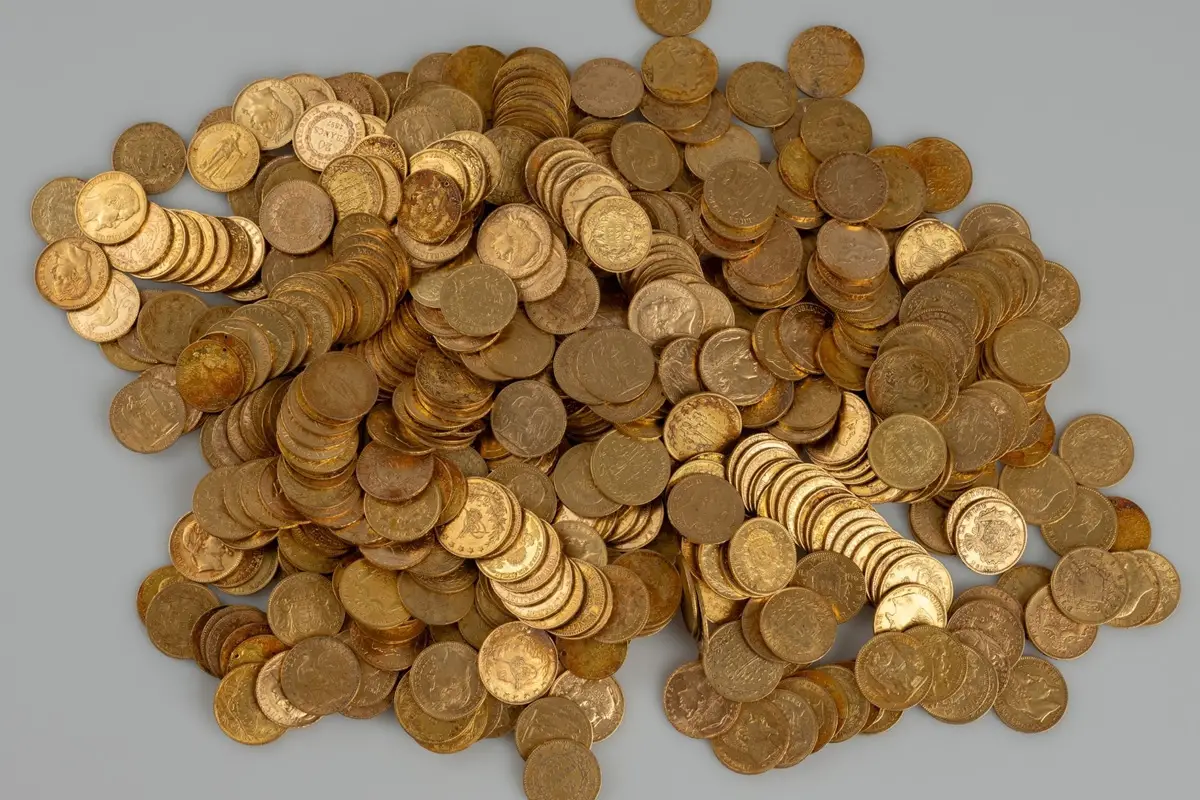A 7-kilogram treasure hoard has been discovered by hikers on Zvičina Hill, located in Třebihošť-Mostek, Czechia.
The hoard was found concealed in two containers behind a man-made stone wall on the hill’s southwestern slope in February 2025.
Upon realising the scope of the discovery, the pair notified authorities and handed the hoard over to the Museum of East Bohemia in Hradec Králové.
Weighting in at 7-kilograms, the hoard consists of 598 gold coins wrapped in black fabric, a delicately woven silver purse, and various gold-coloured objects such as 10 bracelets, 16 cigarette cases, a key attached to a chain, and a powder compact.
According to Miroslav Novák, Head of the Archaeological Department at the museum, the discovery is exceptional not only for its weight, but also for its relatively recent origin. “Burying treasure has been a practice dating back to prehistoric times—initially for ritual reasons, later to protect wealth during turbulent periods,” said Novák.

Unlike hoards from prehistory, antiquity, or the Middle Ages—where the reasons behind a hoard deposit is often a matter of speculation—treasures from more recent times offer greater opportunities for historical investigation. In such cases, researchers can potentially draw on archival records to reconstruct the story behind the deposit.
The primary clue lies in the numismatic chronology of the coins, which dates from 1808 to 1915; however, several bear smaller counter-stamps that were likely added after World War I. “Some of the coins were minted in the former Yugoslavia during the 1920s and 1930s, suggesting the hoard was buried well after 1915,” added Novák.
Most of the coins come from France, while others trace back to Austria-Hungary, Belgium, and the Ottoman Empire. Curiously, there’s not a single coin from Germany or Czechoslovakia—an absence that deepens the mystery surrounding who buried the hoard and why.
According to the Museum of East Bohemia, the hoard is considered one of the most significant in recent Czech history, offering a rare and tangible link to the early 20th-century social and economic landscape of Central Europe.
Header Image Credit : Museum of East Bohemia
Sources : Museum of East Bohemia





